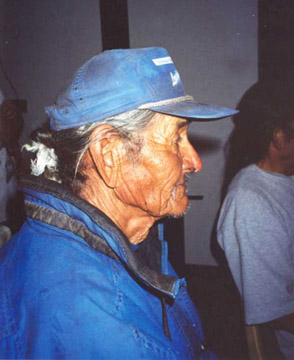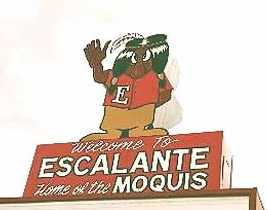Home |
Contents |
Photos |
News |
Reviews |
Store |
Forum |
ICI |
Educators |
Fans |
Contests |
Help |
FAQ |
Info


Native Journalism: To Tell the Truth
(7/14/02)

"In day-to-day coverage, minorities often are ignored except for certain categories of stories—notably crime, sports and entertainment," said M.L. Stein in Editor and I. This is a dangerous way of reporting because the media shapes the views of the audience and plays a role in shaping the formation of Canadian minority identities. The media provides an important source of information through which citizens gain knowledge about their nation, and our attitudes and beliefs are shaped by what the media discerns as public knowledge. "The media is responsible for the ways that Canadian society is interpreted, considered, and evaluated among its residents," said Minelle Mahtani in Canadian Ethnic Studies Journal.
Chloe Tejada, Media Column: How the Media Silence Native Americans, 7/2/05
If the world allotted me only one rant it would be this: Racial tension, cultural and ethnic misunderstandings rage on in America because the mainstream media fails to report fair, accurate, and timely stories about communities of color. Media research has revealed how this lack of sufficient news coverage affects racial attitudes in this country. Any honest editor would concur.
Mark Anthony Rolo, Introduction, "The American Indian and the Media"
If you let the media paint over you with wide brush, once, twice, three times, you will be to the world whatever color they paint you.
The Indian Sovereignty Fight Is a Good Fight, Indian Country Today, 6/4/04
*****
The Reading Red Report (2002)
Q: What's black and white and red all over?
A: Not the mainstream media.
The media has improved its Native coverage dramatically in the last few decades, but there's still a long way to go. So suggests an excerpt from The Reading Red Report released June 19 by the Native American Journalists Assn. (NAJA) and San Francisco State University's News Watch program:
The majority of Native American coverage fell into three topic areas: casino gaming by tribes, mascot team names and "on the res" datelined stories.
"On the res" topics accounted for 225 stories, or 20 percent of the total found. This was in large part because of the 103 stories The New York Times produced in this category.
A preponderance of "on the res" stories were from Pine Ridge, S.D., or Window Rock, Ariz. At best, they provided information about communities many readers know little about. At worst, they reinforced stereotypes about barren landscapes, family feuds and poor yet mystical people, the kind you might see in an old episode of "Northern Exposure."
"On the res" stories also belied 2000 Census data that most Native Americans lived in cities, not on reservations. So many stories in The New York Times were datelined Pine Ridge that a reader might not have realized that New York City's 87,241 Native American residents make up the largest urban Indian community in the nation.
New York, Los Angeles, Chicago and Houston are among the 10 cities with the largest urban Indian populations. Only Newsday in New York regularly covered city-dwelling Native Americans.
Casino stories ranked second with 145, or 13 percent, of stories found. The Los Angeles Times and The New York Times covered the topic extensively because of controversial approvals of new tribal casinos in their states.
Casino gaming is changing rural America and bringing employment, if not always wealth, to long impoverished tribal nations. It is a story of historic proportion as tribes use casino revenues to help recover from 500 years of oppression. Many tribes also are using their new prosperity to build partnerships with neighboring communities, to recover cultural artifacts and to cope with the new hostilities that prosperity can breed.
But most casino stories were focused on government process. They contained comments from government bureaucrats who expressed suspicions of tribal enterprises. They turned potential stories about economic successes into redundant and sometimes negative accounts.
Headlines on casino stories were especially problematic. Too often, they toyed with the "clever" wording of 1950s Hollywood Westerns such as "circle the wagons." Attempts at clever word play or inappropriate gambling metaphors around a racially-charged topic smack of prejudice, and erode what's left of news organizations' credibility in the eyes of Native American readers.
Mascot stories were the third most common found with 116 examples or 11 percent of coverage. The Chicago Sun Times' coverage of the University of Illinois' Chief Illiniwek mascot accounted for 42 of the stories on the topic, and 43 percent of that newspaper's reporting related to Native Americans.
Played against the backdrop of a community in which teen boys are some the most likely people in America to commit suicide and where Native American women are highly likely to be abused by men of other races, the dehumanizing effect of mascots has profound significance.

Editors ignore Native perspective
A good example of how mainstream editors still don't get it:
Native voices a murmur in media
TorontoStar.com
Posted 12/14/01
"Do you ask indigenous people to write for the Post?" I asked.
"Quite frequently, we've tried to get Matthew Coon Come to write for us," Whyte says.
"But what about writers like me, not political figures, you know, writers like Tom King, Drew Hayden Taylor . . . or somebody new?"
"I published Tom King a lot in Saturday Night, I love Tom King," Whyte says, "But he doesn't comment that much on political issues."
He then begins asking me why that matters.
Well, if personal experience doesn't matter, I say, why do the Post and The Globe employ writers like Rebecca Eckler and Leah McLaren to write about being young, urbane women?
"Is this about her being Jewish?" he asks.
"What? Leah McLaren is Jewish?" I ask.
"No, Rebecca is," he deadpans.
"No, it's not about Rebecca being Jewish," I say. "It's about writers like her writing about the young woman of the world thing. It's a cliché — you don't have old men writing that stuff."
"Well, that's different, it's a gender thing," he says.
Hmmm, I think.
For more information on Native journalism, visit the Native American Journalists Association.
Native journalism in Newspaper Rock
Jodi Rave blogs
All about Stacey Thunder
Native newspaper at University of Arizona
Indian photos in Life magazine
Writing for Newspaper Rock
Ellsbury blogs about losing
Censored stories in 2008
NAJA's 2008 award winners
Brenda Norrell censored?
From the ICT style guidelines
More Natives = better coverage
Original Pechanga fibs about news site
Educating "Original Pechanga" about news
Indians MIA at Newseum
Native journalism—writing and general
Reading Red: Report Finds Lack of Coverage
Media Matters: Indian Gaming & the Press
Why Media Matters: Indian Gaming in the News
Covering Indian Country
California Imaging: Framing the Indian
A Note to American Journalists: More Balance, Please!
Abramoff Reporting Exposes Anti-Native American Media Bias
Media Column: How the Media Silence Native Americans
Reporting on the Reservation: "Covering complex cultural beats with an open mind helps measure up to the mission of journalism"
The Indian Sovereignty Fight Is a Good Fight
Journalists and Indians: the Clash of Cultures
Media, Tribes Listen and Learn at Symposium
Native Journalists Emphasize Convergence, Coverage [18th annual NAJA conference]
Field Trip Proves California's Indians Are Alive and Dancing
Hot Issues in Native Journalism
Native journalism—multimedia
Native documentaries and news
More on ethnic media
Ethnic Media Closer to People
Related links
The essential facts about Indians today
Tipis, feather bonnets, and other Native American stereotypes
The harm of Native stereotyping: facts and evidence
Stereotype of the Month contest
* More opinions *
|
|
. . .
|

|
Home |
Contents |
Photos |
News |
Reviews |
Store |
Forum |
ICI |
Educators |
Fans |
Contests |
Help |
FAQ |
Info
All material © copyright its original owners, except where noted.
Original text and pictures © copyright 2007 by Robert Schmidt.
Copyrighted material is posted under the Fair Use provision of the Copyright Act,
which allows copying for nonprofit educational uses including criticism and commentary.
Comments sent to the publisher become the property of Blue Corn Comics
and may be used in other postings without permission.


